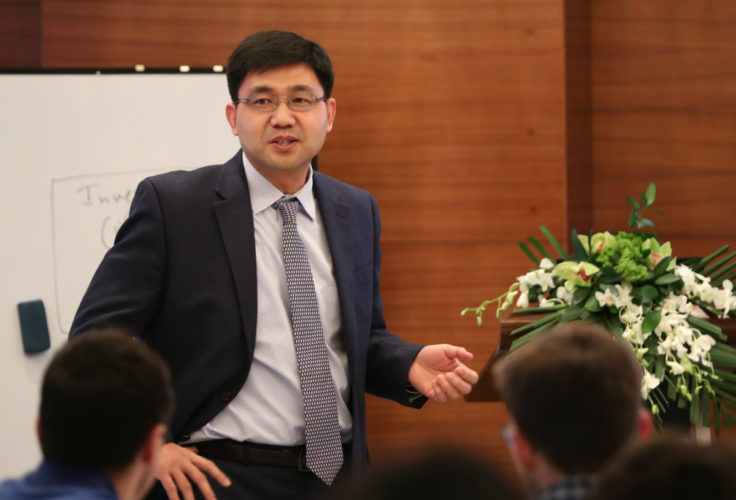Should a firm source products from its home country or overseas? The past few decades have witnessed the trend of offshore manufacturing, where firms move their production facilities from home countries to emerging economies. However, such a trend has been changing in recent years. The keywords “reshoring”, “onshoring”, and “backshoring” have frequently made headlines in the business press. That is, more and more firms are considering moving their production back to their home countries. The latest research from Olin’s Fuqiang Zhang explains why we are observing such a new trend of reshoring.
“The debate about offshoring vs. reshoring has been intensified in the last few years,” says Fuqiang Zhang, Ph.D., associate professor of operations and supply chain management at Olin. “This gives rise to many interesting questions. For example, what are the driving forces of the new trend? How does the rising sourcing cost in emerging economies affect firms’ profitability?”
The recent paper “Home or Overseas? An Analysis of Sourcing Strategies under Competition”, coauthored with Xiaole Wu, assistant professor at Fudan University in China with a Ph.D. from Olin, sheds some lights on these questions.
“It has been reported that some high-profile companies have started moving their production back to the US, including Apple, Caterpillar, and General Electric,” says Zhang. “Our research reveals three possible driving forces behind such movements: more volatile market demand, shrinking market size, and rising global commodity prices.” These findings corroborate with industry evidence such as unstable economic conditions and rapidly increasing commodity price indices.
Many people attribute the reshoring trend to the inflating manufacturing and logistics costs in low cost regions such as Asia. As the cost advantage of offshoring diminishes, will firms eventually all move back to the US? “Not necessarily,” says Zhang.
“In a competitive market, firms can benefit if they use diversified sourcing locations.” To further explain, note that a firm sourcing from the US has a shorter lead time and therefore can collect more accurate information before production. Thus, diversified sourcing locations imply that firms are endowed with different market information. This helps a firm differentiate itself and therefore dampen the competition.
Another interesting question is how does the rising cost in emerging economies affect firms’ profits? Intuition suggests that a higher cost should be a bad thing for firms. Surprisingly, the research finds that the rising cost actually may improve all firms’ profits. “This is because the rising cost may drive some firms to backshore, which results in a new equilibrium sourcing structure. Under the new sourcing structure, the competition among firms could be less intense and thus benefit all firms.” This finding bodes well for managers who may face the rising manufacturing cost in Asia as well as fierce competition in the market.
“The bottom line is, if we take the competitive landscape into account, then firms’ strategic interaction may lead to interesting insights about their sourcing decisions,” says Zhang. Firms at the crossroad of making offshoring/reshoring decisions should not simply follow the trend. To make an intelligent decision, a firm needs to understand the business environment as well as the competitor’s sourcing strategy.




